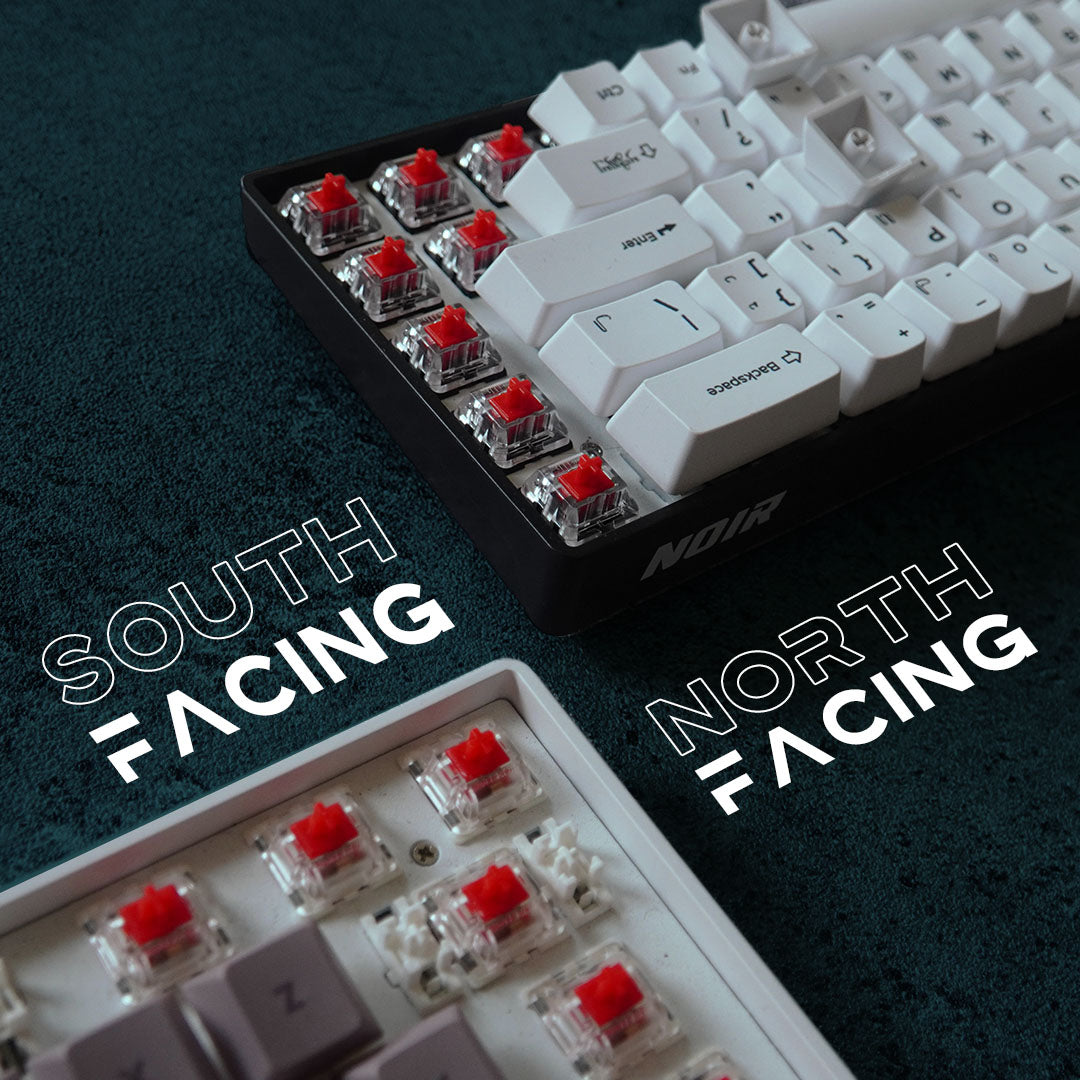
South-Facing PCB vs North-Facing PCB
Share

You have probably heard these two a lot of times already when you're fretting over which mechanical keyboard to buy: South-facing PCB and north-facing PCB. But what exactly are they?
First and foremost, get to know the difference so you can choose the right one that suits your preference best!
What is North-Facing?
North-facing PCB is the switch whose LED is positioned at the top of the keyboard socket or called "north" in analogy. This type of switch is more common in mechanical keyboards compared to the other, south-facing switch.
What is South-Facing?
South-facing PCB is the switch whose LED is positioned at the bottom of the socket or referred as "south". The easiest way to distinguish the two, south-facing is closer to your sitting position.
The difference between south-facing and north-facing
The most noticeable signifier between the two is the LED position inside the socket. But it's not only about where it's located, the difference results in upside and downside of its own.
OLV75 with South-Facing PCB
The downside of north-facing PCB

Picture taken from https://geekhack.org/index.php?topic=105914.0
When it comes to north-facing PCB, people complain a lot about the interference especially when they are using Cherry Profile keycaps combined with the majority of keyboard switch in the market. When you're using Cherry Profile keycaps combined with some popular switch like Gateron, Outemu, and Cherry placed to north-facing PCB, the keycap cover will bump into the top part of the switch where the LED is at. In other words, this will affect in friction and a less pleasurable sound to the ear.
But we're not saying that Cherry Profile keycaps will not suitable with a north-facing switch. It's just you will be less likely to get the optimum experience with this combination.
Considering that the Cherry Profile keycap is the most popular among others, a lot of keyboard enthusiasts are veering away from north-facing PCBs, and choosing south-facing PCBs instead.
To address the arising problem on north-facing PCB, you can use Long Pole switch, namely Gazzew Bobba U4T, Tecsee Carrot, and other switches.
The downside of south-facing PCB
Even though we mentioned that south-facing PCB will have less possible interference when used with Cherry Profile keycaps, south-facing PCB also has its own downsides. Especially if you lean towards "transparent" keycaps, where the RGB Light shines through the whole alphabets on the keycaps.
LED Light on the south-facing PCB is not positioned right at the bottom of the alphabets. That said, the LED will only be noticeable in between the keycaps, unlike the north-facing PCB.
Picture taken from https://www.etsy.com/il-en/listing/886026238/pbt-double-shot-shine-through-asin-iso
Which one is better: North-facing or south-facing?
If we weigh the pros and cons of the two, south-facing PCBs tend to have less interference, with a better sound and experience for your productive or gaming hours.
If you're new to the whole keyboard thing, it's worth noting that dye-subbed PBT is one of the yardsticks of high-quality mechanical keyboards. But if PBT dye-subbed is combined with north-facing PCB, you will lose the chance to enjoy the only perks of north-facing PCB, since the LED light won't be distinguishable on the keycaps.
All the pros and cons aside, it all comes down to your preference and taste. If you lean more towards the south-facing PCB, Noir Gear has a few options in its lineup: Starting from N1 Pro, N2 Pro, and OLV75! If you fancy RGB, Noir also has N1v3 with a shine-through feature when combined with north-facing PCB.



